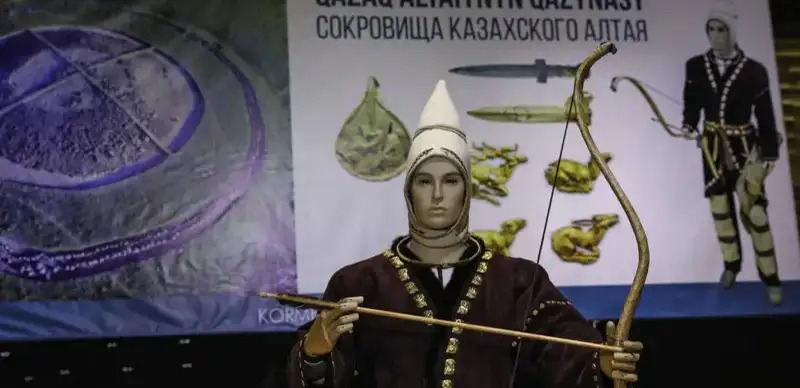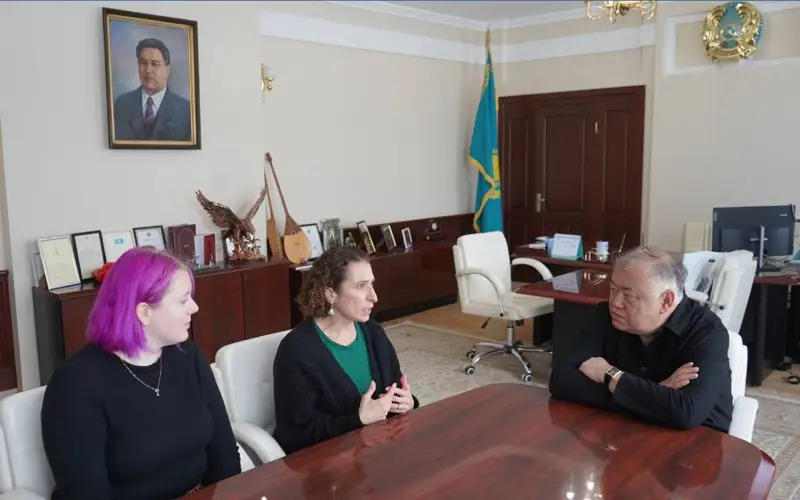
ASTANA—Kazakh and U.S. scientists will collaborate on a project analyzing human and animal bones to discover the details of nutrition during the bronze era, the Kazakh Ministry of Science and Higher Education’s press service reported on May 20.

Photo credit: Viktor Fedyunin/Kazinform
Bone remains containing the tartar of a people who lived in the bronze age might reveal the new details about the diet and nutrition of ancient people.
The bronze age on the territory of Kazakhstan is mainly represented by the Andronov culture, which dates back to the 18-12th centuries BC. Monuments of the Andronovo culture were found in central Kazakhstan. They were a blend of herders-pastoralists and farmers, growing crops on the riverine floodplains. Hunting, fishing and gathering ceased to play a major role in the Andronovs’ economy.

Representatives of the delegation met with the Chairman of the Board, Rector N.O. Dulatbekov. Photo credit: Ministry of Science and Higher Education of the Republic of Kazakhstan
A delegation from the University of Michigan consisting of Assistant Professor of anthropology, paleozoologist Alicia Ventresca-Miller and two doctoral students, Kara Larson and Dan Garner, visited the Saryarka Archaeological Institute at Karaganda Buketov University on May 14-16. The purpose of the visit was to familiarize themselves with the institute’s osteological collections, which are renowned in the global archaeological community beyond Kazakhstan.
To investigate the remains on human and animal bones, scientists will employ a variety of advanced techniques.
“Based on the analysis of dental calculus in human and animal bone remains using modern technologies on isotopic analysis, nitrogen, protein and strontium content, the model of human nutrition in the bronze age is reconstructed. This is of great importance in the current global food risks of mankind,” the scientists explain.
Director of Saryarka Archaeological Institute Alexey Kukushkin said the institute is ready to provide material for research in the U.S. laboratories. The two sides plan to formalize the partnership with a memorandum and start the project this year.
“Colleagues from Michigan reached out to us around a month ago. Through correspondence, they learned about what kind of base we have and the potential for collaboration. In May, they visited to familiarize themselves with the collection of bone material. The meeting was successful. In the future, we plan to conclude a memorandum between the universities. The project is being prepared. I think, this year we will be able to start implementation,” said Kukushkin.
This project is the first of its kind to be implemented in Kazakhstan.
link



:max_bytes(150000):strip_icc()/Best-Condiments-for-Better-Blood-Sugar-According-to-Dietitians-aa44e694e2324a269ad75f1518d40d2f.jpg)

